Crostoli
Crostoli are crispy fried Italian pastries that are popular during Carnevale and many other holidays.
So light and flaky, Italian crostoli just melt in your mouth. Try stopping at just one – it’s impossible!
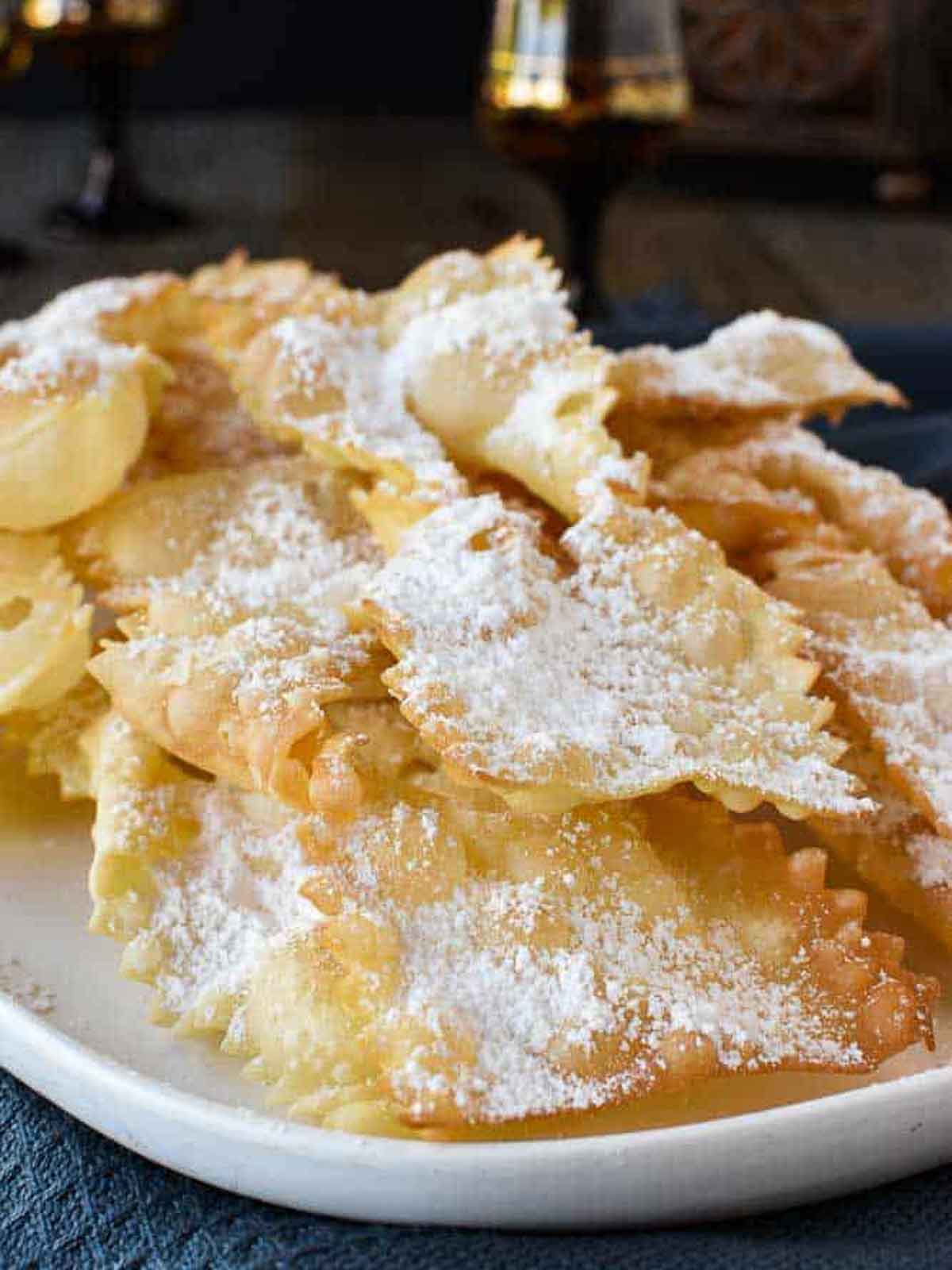
Why you’ll love this recipe
Crostoli are traditional Italian pastries that are fried and dusted with sugar. What’s not to love!!
These pastries are eaten mostly at Carnevale which is the celebration just before Lent. However, in Italy, crostoli are sold in pastry shops throughout Lent. In other parts of the world, these delicate pastries are also favourites at Christmas and other holidays.
Interestingly, this is the crispy, lighter-than-air fried pastry is also known in Italy by many other names such as cenci, bugie or chiacchiere di carnevale. I have always known this pastry as ‘storce’ pronounced ‘storch’. This comes from the Italian word ‘storto’ which means twisted or crooked. In the little village of Camagna Monferrato, we were served a plate of freshly made ‘storce’ along with the meaning of the name.
In other parts of the world, you might know these as angel wings or Italian bow ties. Fried, sweet pastry is common in many countries not just Italy.
While my late mother made delicious storce, her recipe went to the grave with her. So the recipe here is based on Nonna’s Italian fried dough recipe. Nonna Lucia (my husband’s grandmother) passed on her knowledge to my mother-in-law and I have slightly adapted it.
For complete ingredient quantities and full instructions, please scroll to the printable recipe card at the bottom of the page.
Ingredients
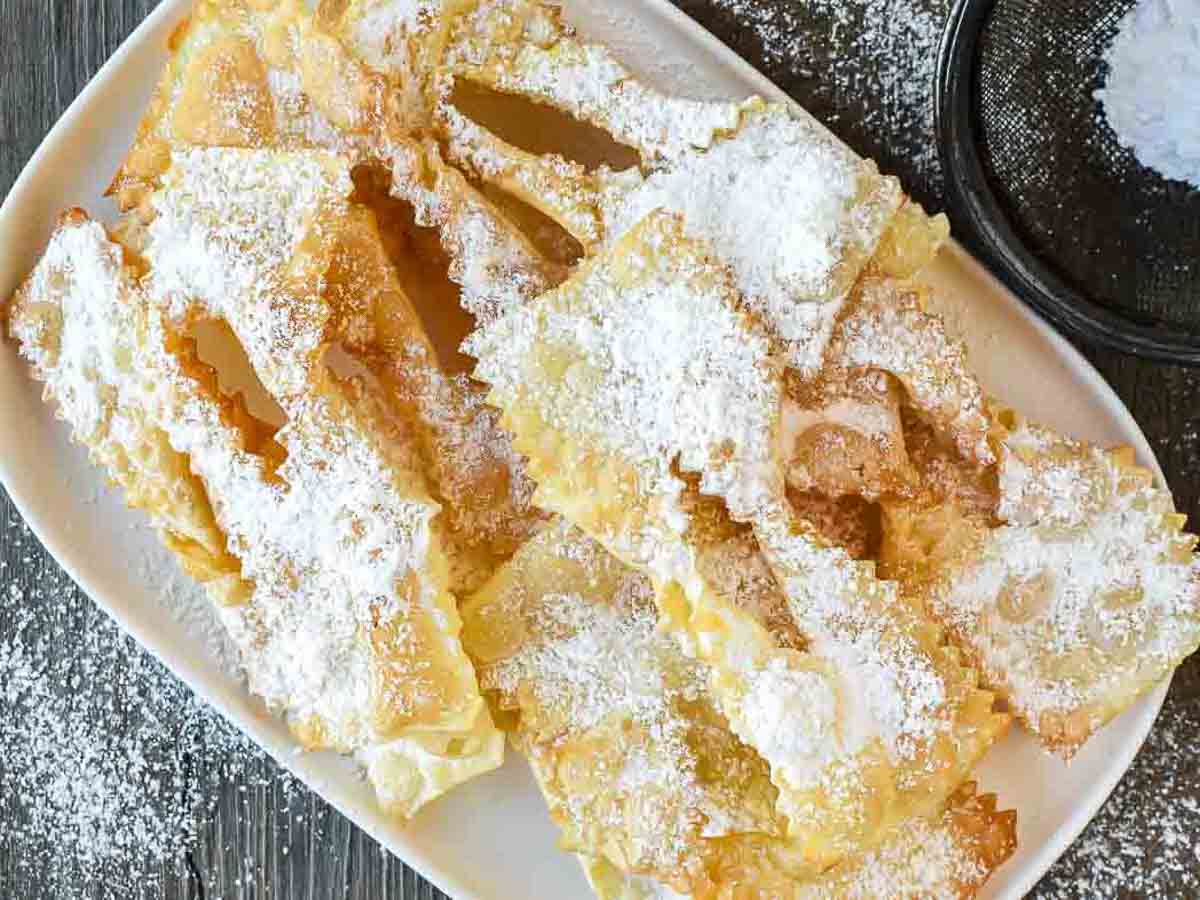
As with most traditional Italian recipes, the ingredients are very basic.
- flour
- eggs
- sugar
- brandy
- butter
- vanilla
- a pinch of salt for flavor
- oil for frying
Nonna’s recipe originally had no butter or vanilla but these add extra flavour.
Instructions
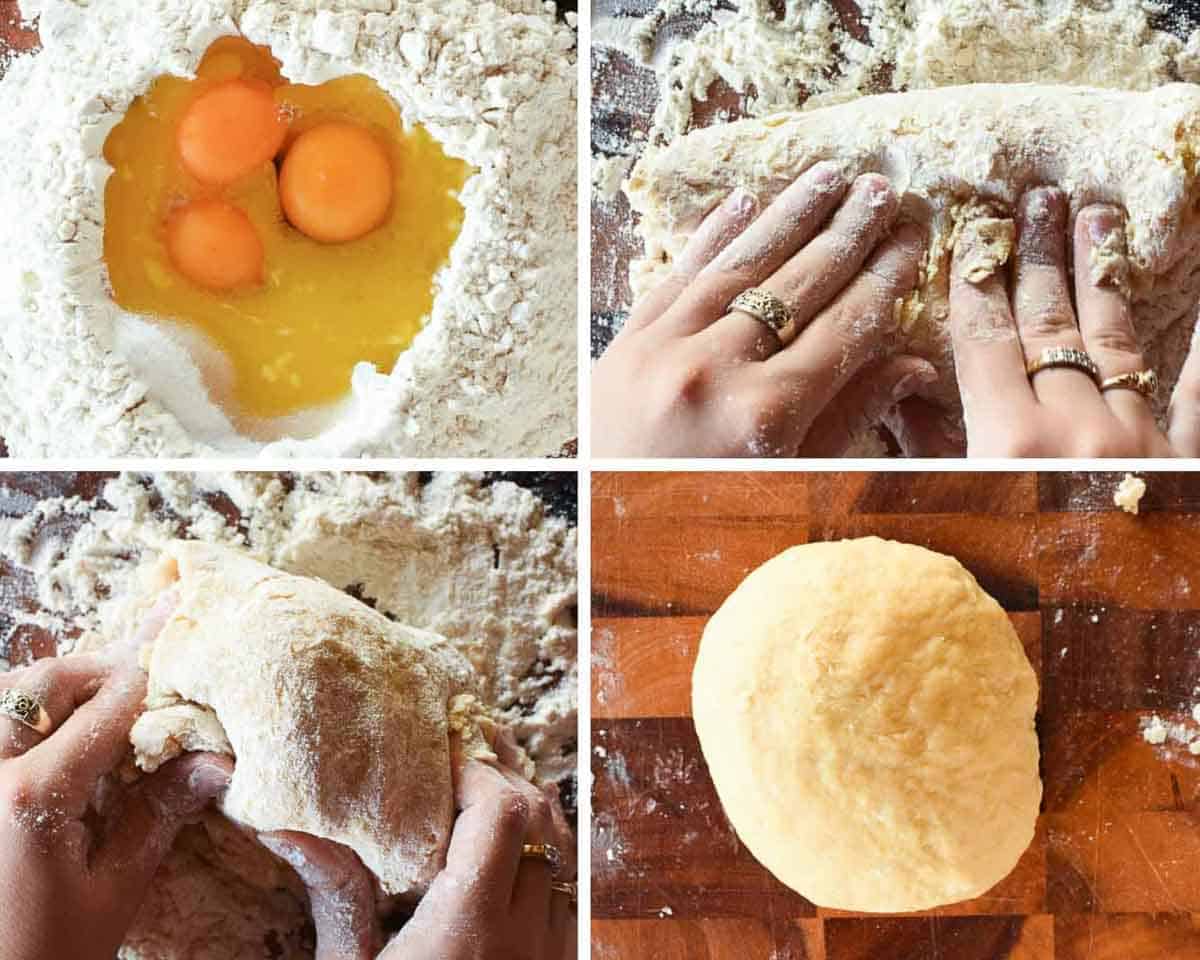
Basically this is pasta dough and you will find more details about making pasta such as tagliatelle and fagottini on my site. This dough can be made by hand or using a stand mixer.
To make this dough by hand:
- Place the flour onto a clean work surface.
- Make a well in the center and add all the ingredients except the oil for frying.
- Use your fingertips or a fork to gradually blend the wet ingredients slowly gathering in flour to form dough.
- Knead well until smooth and elastic.
To make this dough with a stand mixer:
- Place flour into bowl of stand mixer.
- Add all ingredients except the oil for frying.
- Using a paddle attachment, mix to form dough.
- Switch to the dough hook attachment and knead for about 5 minutes until the dough is smooth and elastic.
How to shape crostoli
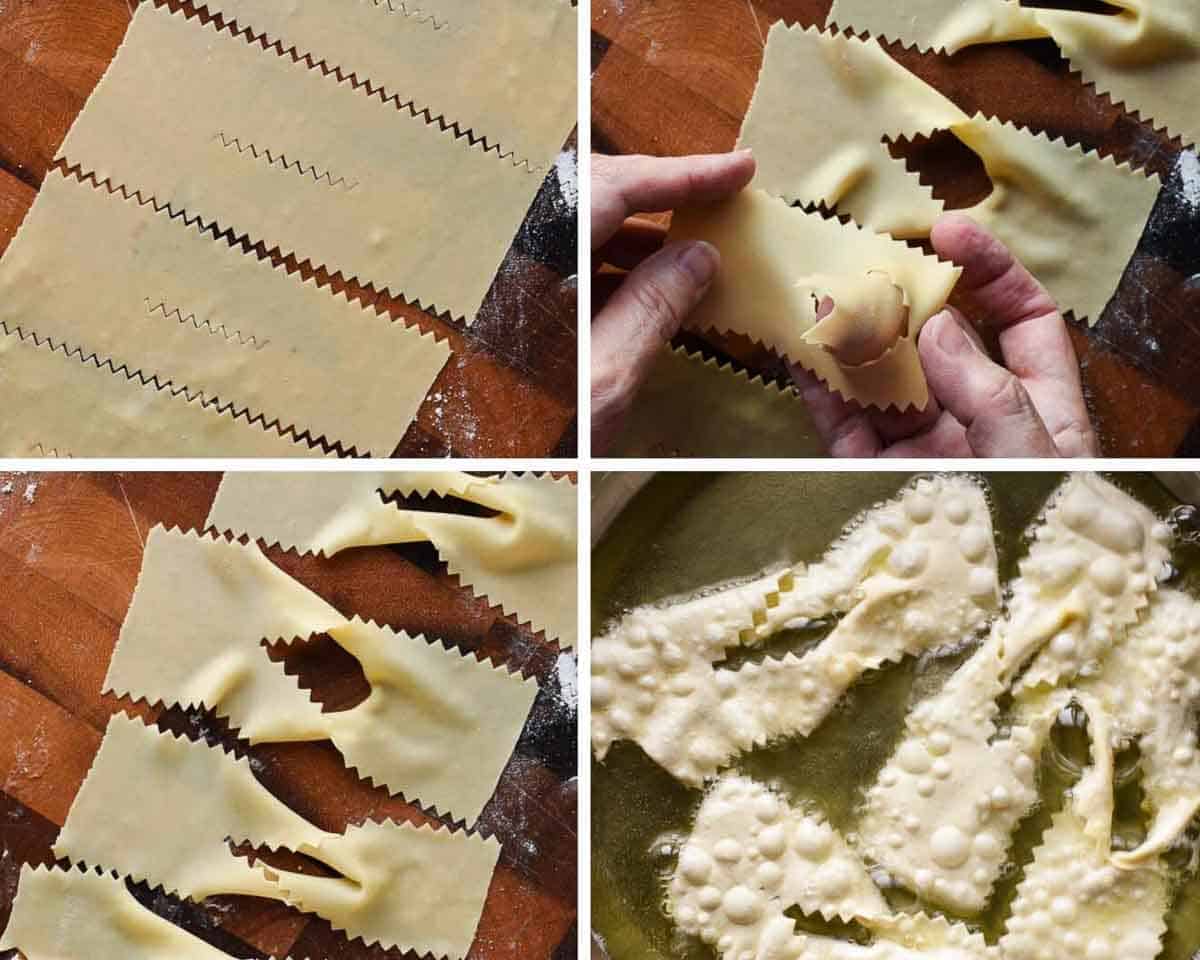
Roll the dough thinly and shape any way you desire. However in saying that these fried pastries are usually shaped by cutting a slit into strips of dough and one end folded through the slit. If you would like to make Italian bow ties, simply pinch the strips of the dough in the center to form bow ties.
Try my Birds Nest Cookies for more festive treats.
Tips for Success
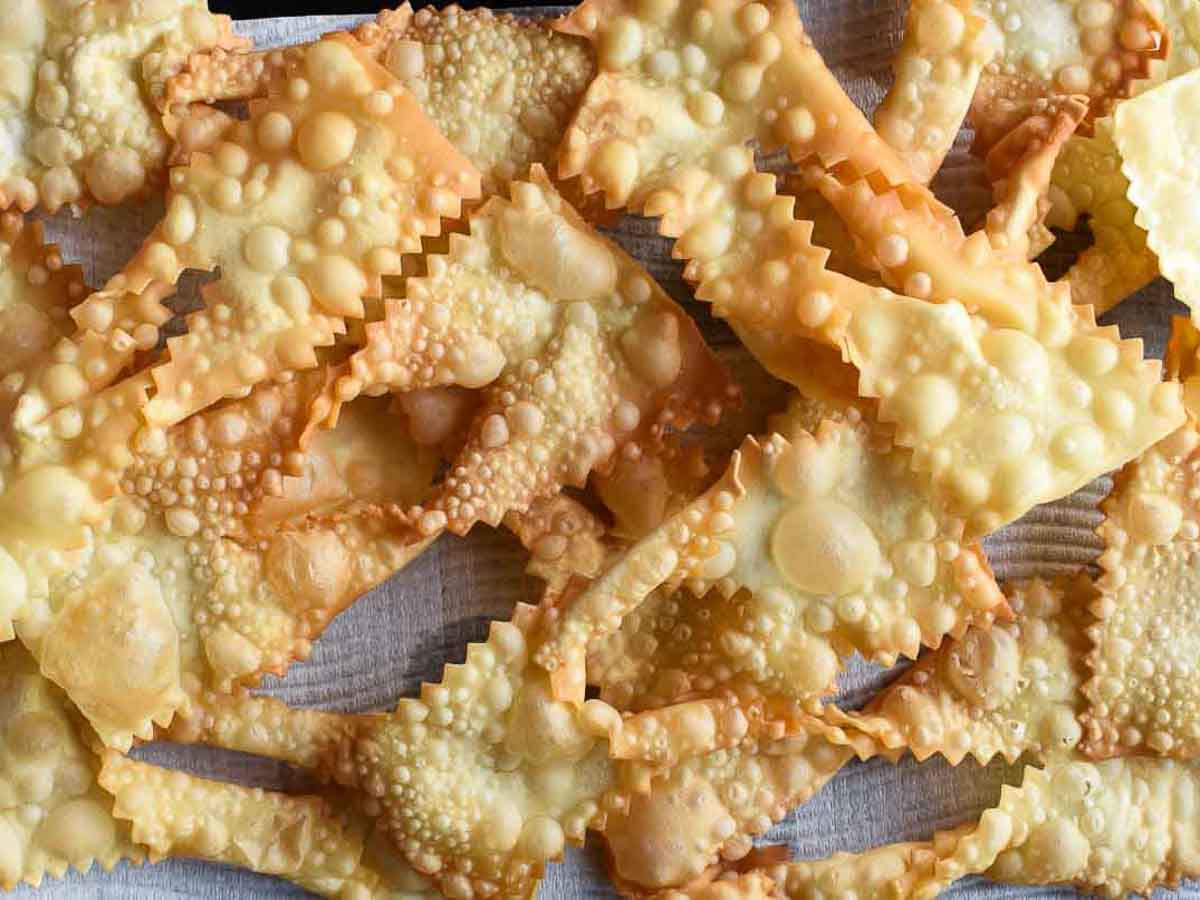
The nature of these Italian fried pastries is that they are delicate, crisp and crumble as you bite into them. To succeed with this recipe, there are a couple of important points to remember.
- The dough should be soft but not sticky.
- Roll the dough as thin as possible – almost see through.
- Don’t let the pastry dry out before frying.
- The oil must be hot – approx 180°C/350°F.
- Pastries must cook quickly so that they don’t absorb oil and become heavy.
FAQ
This recipe is much easier if you have a pasta machine. However, it is possible to roll out the dough with a rolling pin. Admittedly, no one had pasta machines in years gone by! Stretching the dough as well as rolling the dough will help achieve the correct thinness.
This recipe uses brandy. Other recipes use grappa, rum, whiskey, or even white wine. While I have never made these Italian pastries without alcohol, it is possible to substitute milk for the alcohol. The pastries may not bubble as well or have the same flavor but will still be delicious.
My preferred oil is peanut or grape seed oil because they have a high smoke point and a neutral taste. But use any light-flavored oil – olive oil, or rice bran – will all work well.
This recipe makes quite a few pastries but these last for several weeks if stored well. Be sure to use an airtight container. I prefer Tupperware which has a good seal. Line the base of the container with baking paper so that is comes up the sides a little. This will minimize crostoli absorbing a “plastic” smell. Lay a sheet over the top as well before sealing with the lid.
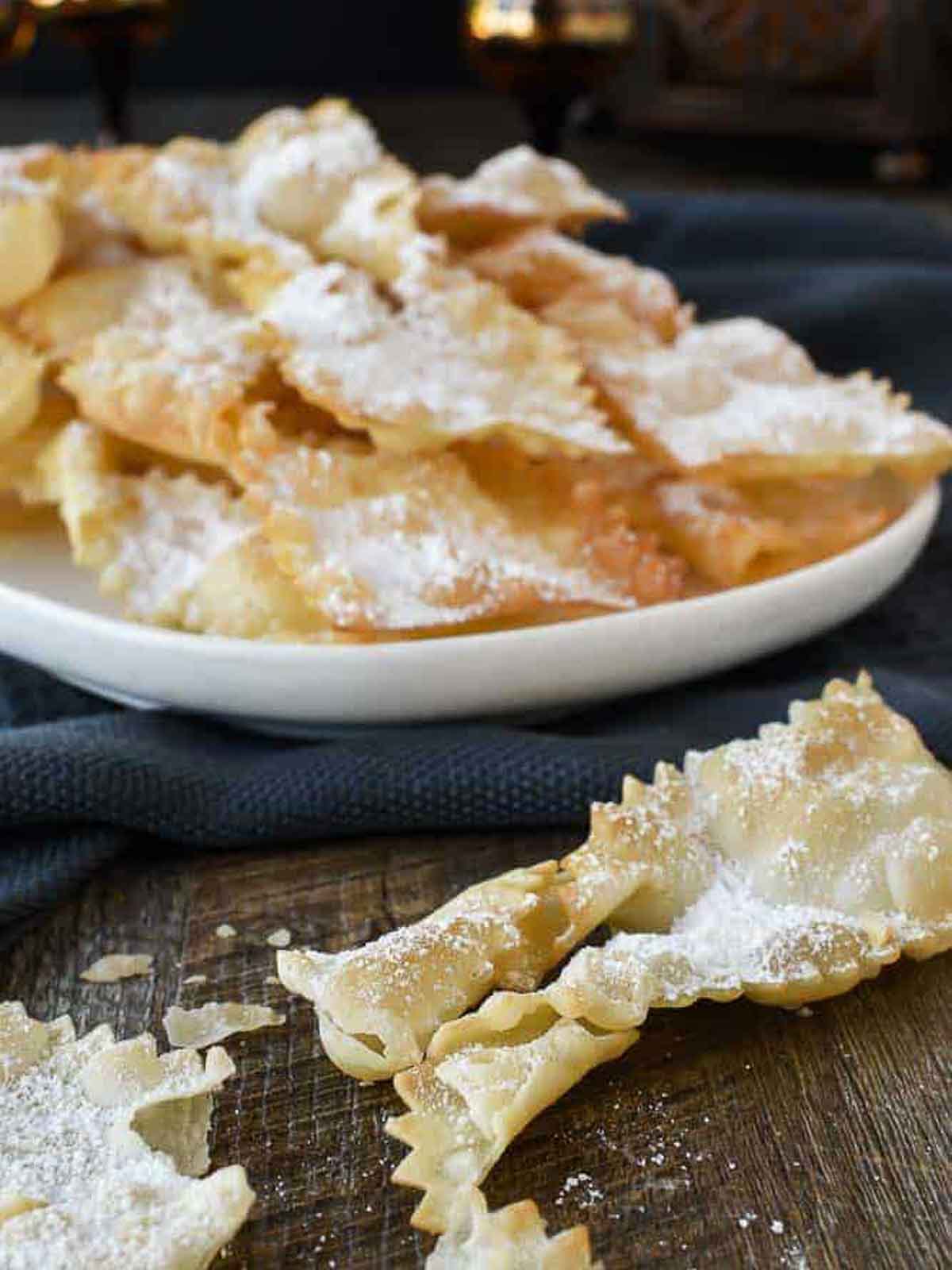
Call these Italian fried pastries crostoli, chiacchiere, angel wings, or Italian bow ties, it doesn’t matter, the addiction is the same! Now everyone can enjoy a little bit of Italy at home.
Made this recipe?
Please let me know if you liked it by leaving a ★★★★★ star rating and a review below. And remember to subscribe to my newsletter – it’s free!
More Italian favorites for you
Pizzelle
Italian Pignoli Cookies
Orange and Almond Cookies
Italian Fig Cookies
Chewy Amaretti Cookies by It’s Not Complicated
Almond Cookies by It’s Not Complicated
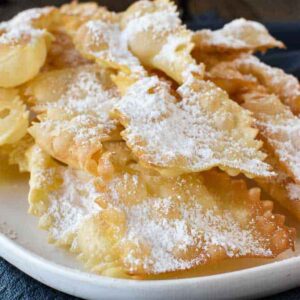
Crostoli Recipe
Ingredients
- 2 cups (250 grams) plain all purpose flour
- 2 whole eggs
- 1 egg yolk
- 2 tablespoon granulated white sugar
- 2 tablespoons (1 ounce/30 grams) butter slightly softened
- 1 tablespoon (15 mls) brandy See note 1
- 1 teaspoon vanilla extract
- pinch salt
- 2 cups peanut oil, for frying See note 2
- powdered sugar for dusting
Instructions
To make the Crostoli dough – hand mixing method
- Place the all purpose flour on a clean work surface.2 cups (250 grams) plain all purpose flour
- Make a well in the centre. Add the eggs, egg yolk, sugar, butter, brandy, vanilla extract and salt.2 whole eggs1 egg yolk2 tablespoon granulated white sugar2 tablespoons (1 ounce/30 grams) butter1 tablespoon (15 mls) brandy1 teaspoon vanilla extractpinch salt
- Use your fingertips or a fork to gradually blend the wet ingredient slowly gathering in flour until the dough starts to come together. Add a little more brandy if needed to form a ball.
- Knead for about 5 minutes until the dough is smooth and elastic.
- Rest the dough for 30 minutes.
To make the Crostoli dough – stand mixer method
- Place the all purpose flour in a stand mixer bowl and attach the paddle attachment.
- Add the eggs, egg yolk, butter, brandy, sugar, vanilla extract and salt. Mix on low until combined.
- Switch to dough hook attachment and knead for about 5 minutes until the dough is smooth and elastic.
- Rest the dough for 30 minutes.
To roll and prepare Crostoli for frying
- Cut small portion of dough off the “mother” dough.
- Flatten the smaller piece and begin to pass through the pasta machine on the widest setting.
- Fold and pass it through the widest setting. Continue to fold and pass through the pasta machine 5 or 6 times until the dough is smooth.
- Dust with extra flour as required.
- Begin to reduce the setting until you are at the finest setting.
- Pass the dough through the finest setting and place the length of dough on to you work surface. With the Kitchen Aid Pasta roller, I find I need to go through the thinest setting twice. You could also manually (but carefully) stretch the dough to ensure it is as thin.
- Cut the dough along the length into about 2 inches (5 centimeter )strips which will be approximately 4 -6 inches (10-15 centimeters) long. This is just to give you an idea but really how you cut is up to you.
- I make a small cut in the middle of each piece and twist one end through the cut, as you can see above.
To fry Crostoli
- Heat oil in a heavy, high sided frypan.2 cups peanut oil, for frying
- When the oil is hot (350°F/180ºC) slip in 3 or 4 crostoli (or more depending on the diameter of the frypan).
- Work quickly because they take about 30 seconds (or less) to cook on each side if you have the oil hot enough. Turn them (I like to use two forks) once a lot of bubbles have formed and before they colour too deeply. Crostoli should be light golden in colour. If they are brown, they are burnt.
- When cooked on both sides, remove them and drain them on absorbent paper. Crostoli will be a little soft but will crispen on cooling. If crostoli take too long to cook it means that the oil is not hot enough and they will absorb too much oil resulting in heavy crostoli.
- When cool, dust generously with powdered sugar.powdered sugar
- Store in an airtight container for two weeks.
Notes
- Instead of brandy, use grappa, rum, whiskey, or even white wine.
- Grape seed, olive, or sunflower seed are good substitutes. Lard can also be used.
- Use either salted or unsalted butter.
- The dough should be soft without being sticky.
- Roll it out as thin as possible, nearly transparent.
- Keep the pastry from drying out before frying. Ensure the oil is hot, around 350°F (180ºC).
- Fry quickly to prevent the pastries from soaking up oil.
- While I have never made crostoli without alcohol, it is possible to substitute milk for the alcohol. The pastries may not bubble as well or have the same flavor but will still be delicious.
Nutritional Estimate Per Serving
Nutritional Disclaimer
Nutritional information is an estimate provided by an online nutrition calculator. For accurate results, it is recommended that the nutritional information be calculated based on the ingredients and brands you use.

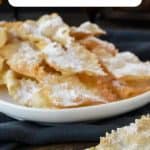
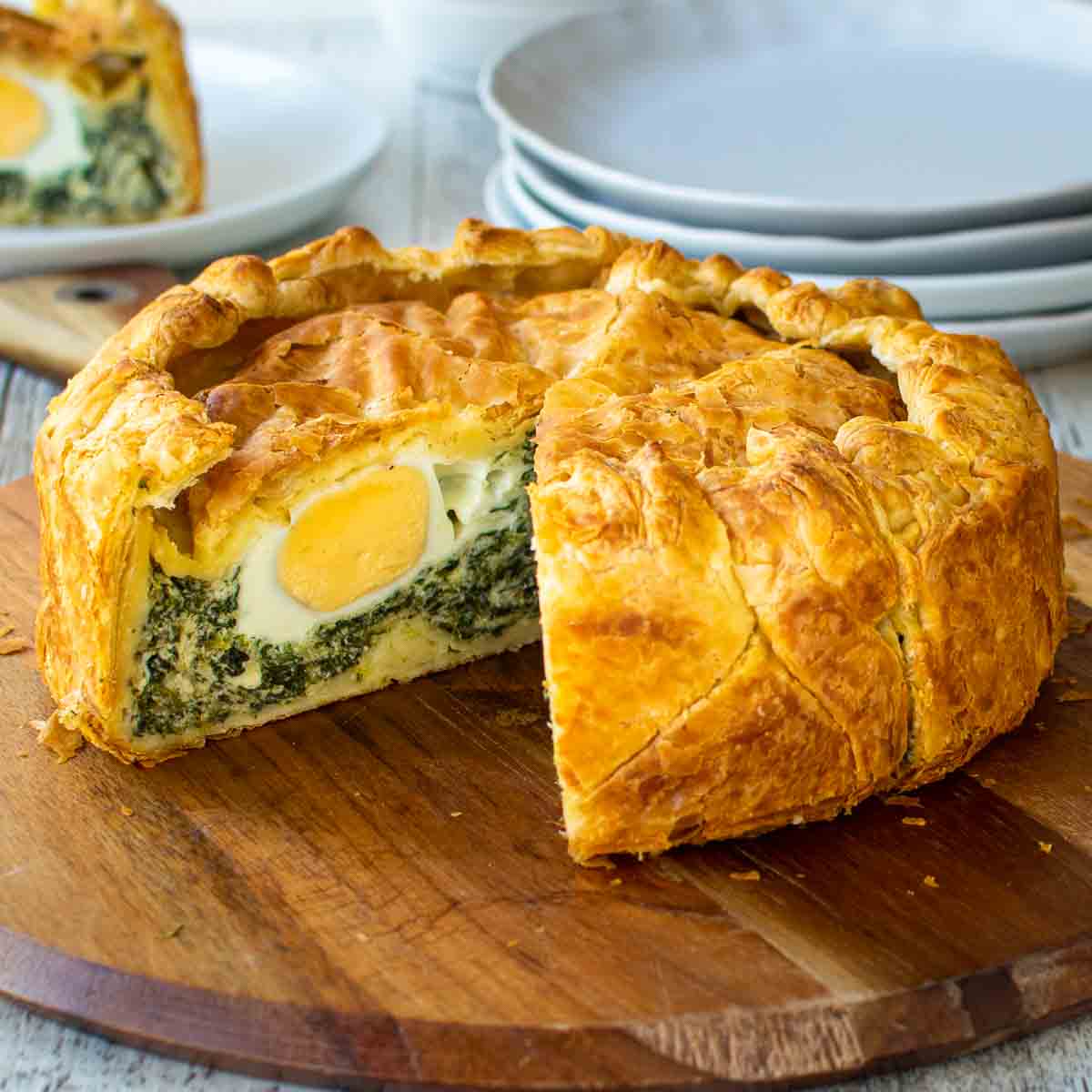

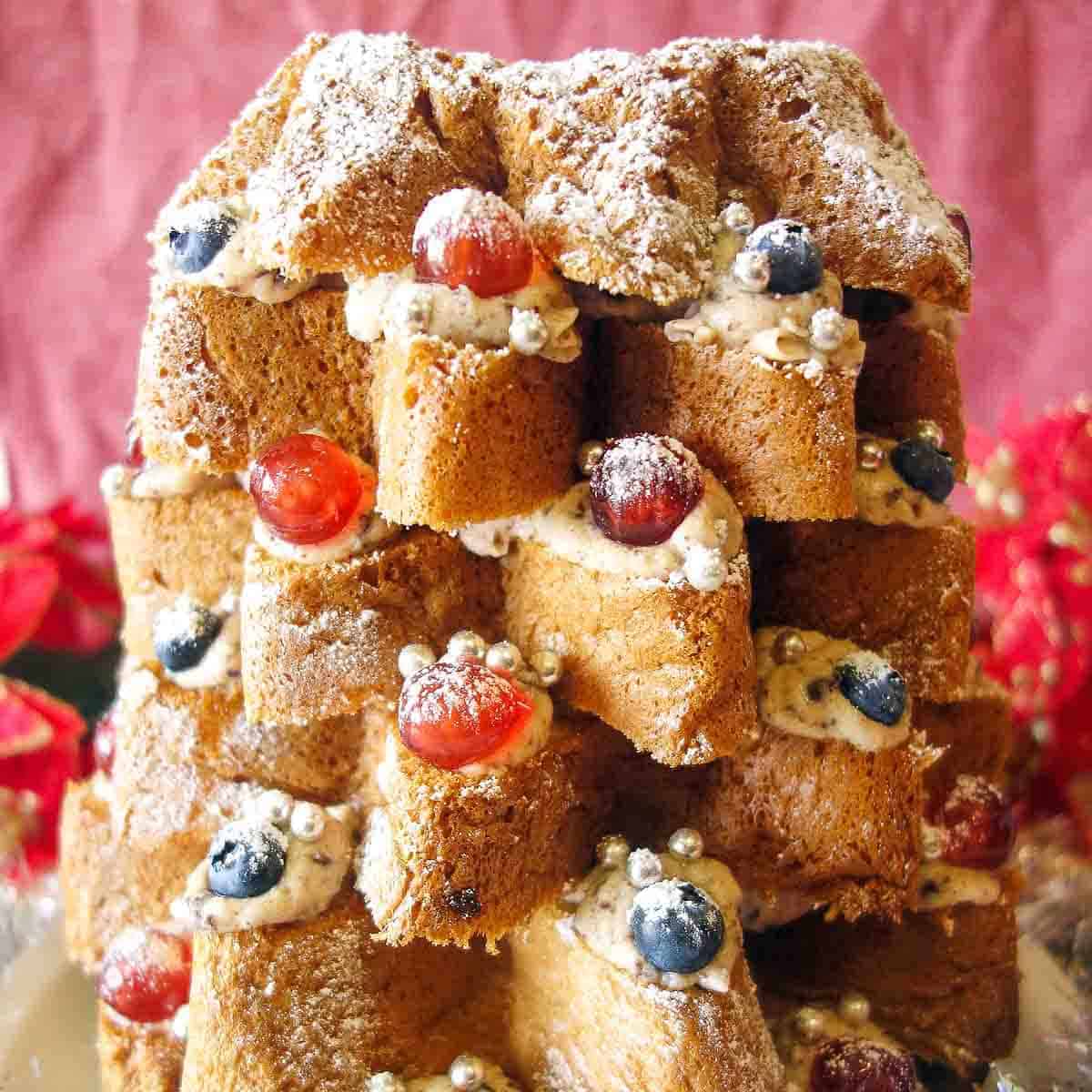
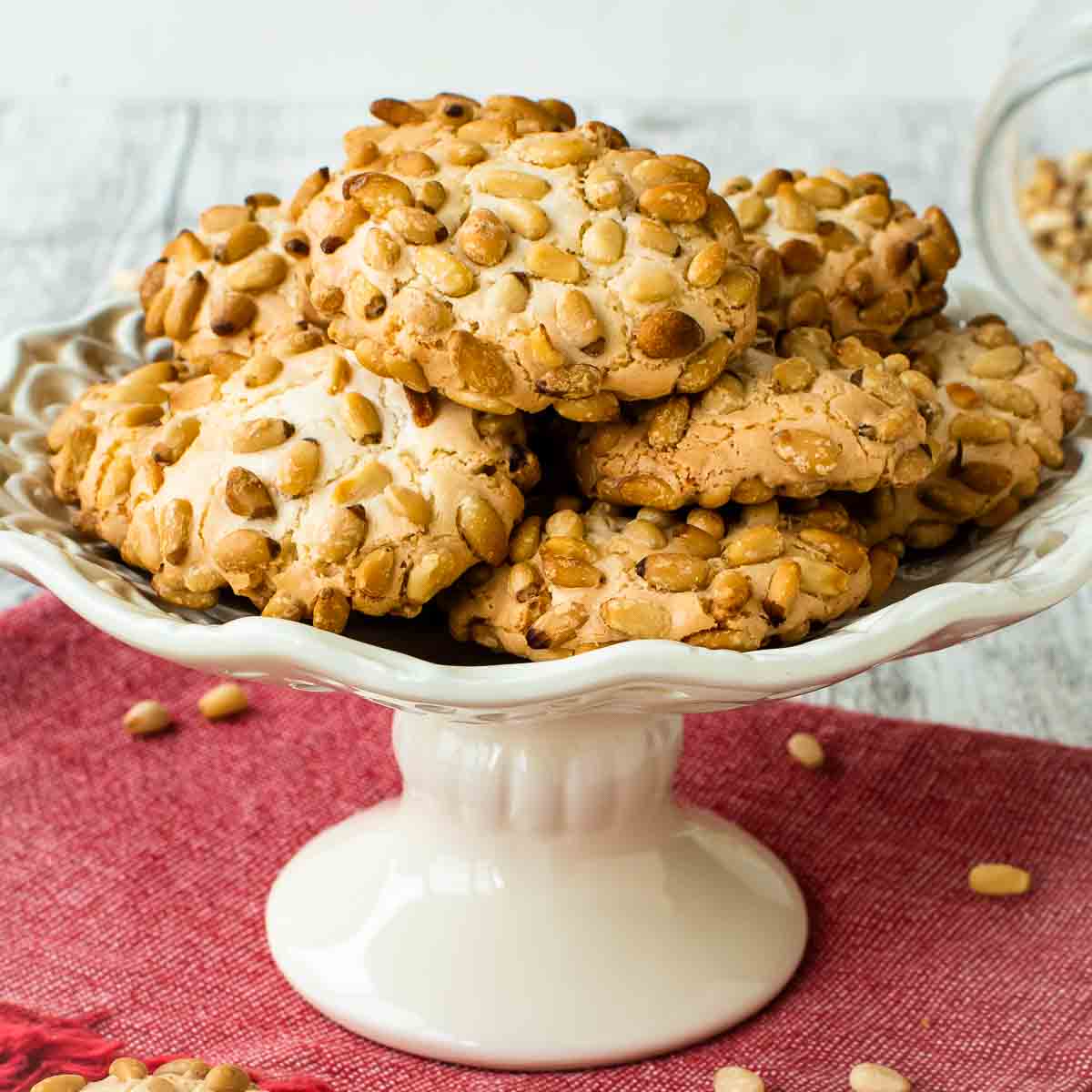
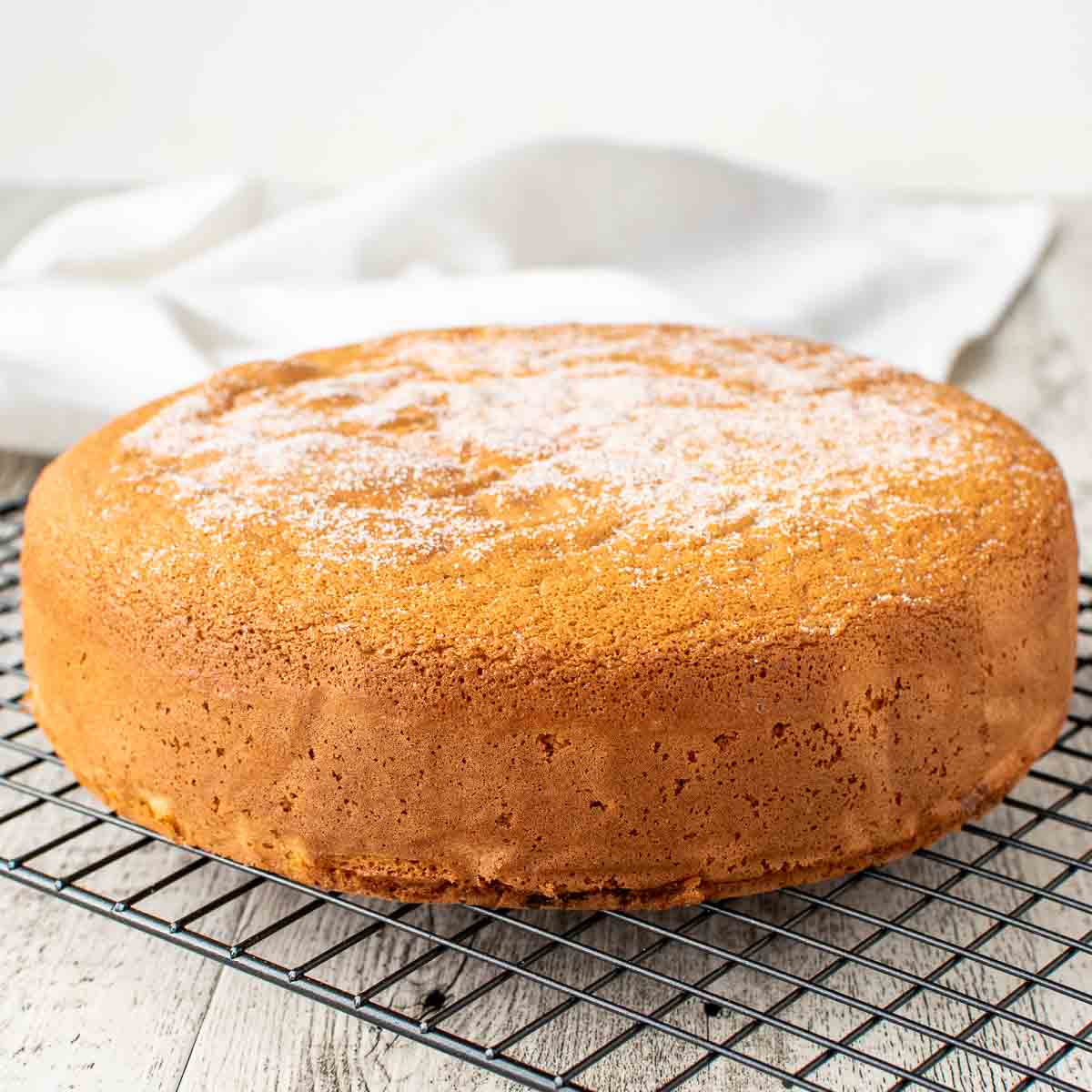
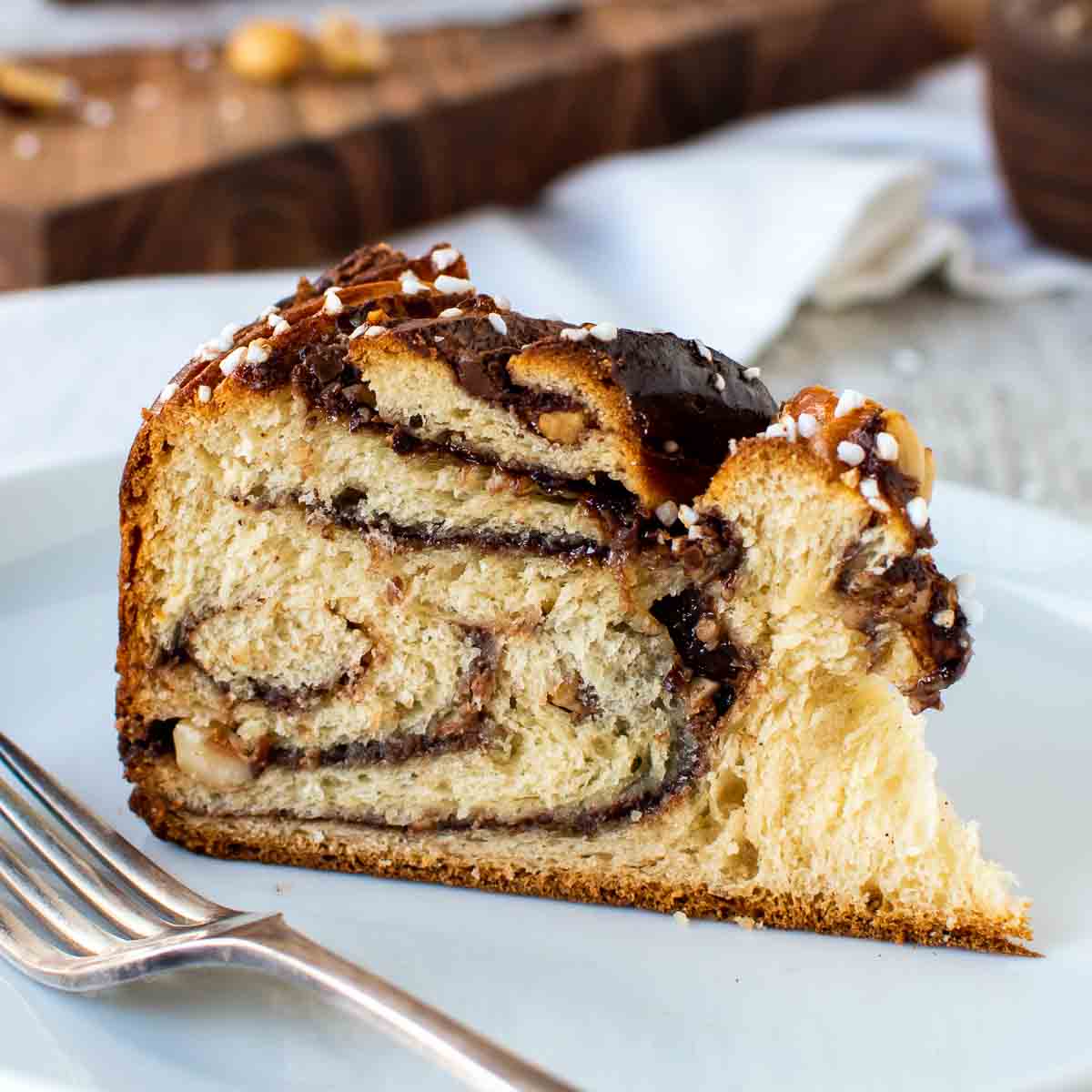
can you add sourdough starter to recipe? if so how does the recipe change?
thankyou
This is a traditional Italian recipe for crostoli, which doesn’t include any raising agents like yeast or sourdough starter. The dough is meant to be rolled thin and fried until crisp, so adding sourdough starter would change both the texture and the result. It’s not an ingredient typically used in crostoli.
I’ve been making these for more years than I like to admit it is my grandma’s recipe she brought with her from Naples. Although the end result is similar her recipe is much different.
There’s no alcohol or butter although I’m not opposed to trying either. After frying we dip ’em in thinned out honey & then sprinkled with powdered sugar. Also we knead, knead, & knead again. Of course I have a stand mixer with a dough hook. Your recipe also states do not let them dry out or they won’t get the bubbles. I do the opposite. I purposely let them dry a little & mine are completely covered with bubbles. It’s been my experience over the years that good kneading ( until the dough is shiny & rested for 30 min) is the secret to achieving bubbles.
Thank you for your feedback, Carol. There are so many versions, aren’t there? My mother’s didn’t have butter but did have alcohol. Although I think she learnt her’s from a friend in Northern Italy because she was from Calabria where this version isn’t used. This recipe is from my husband’s nonna. She was from Piedmont. I’ve always had trouble when my dough dries out but it’s interesting that you don’t. That’s good to know. Thank you! I love hearing about other versions. Yours, dipped in thinned honey, sounds amazing!
Is this a recipe I can halve easily? My mom used to make grostoli every year and I would love to make them for Carnevale/Fat Tuesday. 🙂
Yes, Leesie, you can absolutely halve this recipe. Be sure to add half of the egg yolk. This is important. Enjoy!
Hi Marcellina, My mother, Carmanella Helina Izzi made these delightful morsals of love that we would just devour. She, her 8 siblings and my grandparents were from Sicily, (they don’t make grandmothers like that anymore!) All are gone now, and coming across your recipe brought tears to my eyes. Thank you so much.
Oh my goodness! I love to hear stories like that. Our parents and grandparents were so courageous and kept their traditions. It’s our job to keep their memories alive. Enjoy these crostoli!
Loved it and worked out perfectly.
Thank you for the great feedback, Kerry! I’m glad you loved our family recipe!
your recipe looks amazing, and I will try making it very soon. I wanted to ask if it is at all possible to make any part of the process ahead of time, and keep in the freezer or fridge, and fry a few days later?
Hi Gally. Yes, you could do that. When I’ve done that I find that the outside of the dough can discolor but it should still be ok. I’ve never frozen it – only wrapped it well in plastic and refrigerated it.
we would make these Christmas Eve. beautiful.
These are a must for Christmas in our family too!
Marcellina, thank you so much for this recipe. My mother and I would make these at Christmas when I was a young boy. I bought a deep fryer this year just to make these for friends and church gatherings. So many of your recipes bring back so many good, warm memories. Again, thank you. You are so appreciated from afar in Rhode Island.
Joseph, I’m so happy to hear the my recipe bring back such wonderful memories. I understand that so well. When I’m in the kitchen, I feel my mother by my side. Thank you for sharing your story with me. I appreciate it so much!
This is absolutely amazing. I did try to use the stand mixer at first and it didn’t work out. Best way is by hand. I also substituted white rum for the brandy and it still was SO GOOD!! I would highly recommend using a pasta machine like the instructions say. It makes things so much easier. This little bit of dough really goes a long way !! Thank you for the recipe. It’s a huge hit in my home!
You’re welcome, Chantel! These are an institution in my house for Christmas. My mother made them, my mother-in-law and nonna-in-law made them. Now my sister and I always make them. It isn’t Christmas without crostoli.
Hi Marcellina , your recipe for crostoli sounds very enticing and I will sometime soon in the future attempt to make some.Living in Australia, regularly I used to go to the market and buy some—but now I live in Bali with my wife and thinking there maybe a small opportunity in the market to make some and sell crostoli here to locals and tourists alike in a family type small enterprise. Selling freshly made crostoli would be very tasty but is there a method to make them sellable in shops like potato chips. Can you package crostoli in sealed bags and if so how long can they last for,for guaranteed taste? Or do they need to be put in jars or packaged in some other way. I thought l would pick your brain as your expertise is well known.
Looking forward to your informed comments.
Regards Anthony Raffaelli
Hello Anthony, thank you for your comment. Crostoli are delicious and very popular. I think you’ll love this recipe. As you are living in a hot and humid climate, I suggest testing the crostoli yourself to see how long they would last. Well stored and free from moisture they’d stay fresh at least 2 weeks. I see these sold in containers rather than packets as containers would prevent the crostoli breaking. Also don’t make these super thin or the crostoli will be too delicate and break easily. Search for clear plastic containers with hinged lids that seal. Hopefully that helps.
Thanks so much. I made two batches for Easter gifts. I used stregga and all worked well.
You’re welcome, Lynn! Strega is wonderful in these crostoli!
Your recipes are to die for, thank you for sharing. The crostoli were beautiful.
For special occasions such as Easter, Christmas etc. my mother used to make what she called nagatoli, which I don’t even know if I spelled it right were make with crushed almonds and other nuts to a smooth mixture, I remember she also had rose water in them, then put into a light pastry and then cooked them in the oven, would you have heard of these?
Love your recipes, have a wonderful new year, and again many thanks.
My mother was from Sicily, I don’t know if it was something they had in that region but they were beautiful.
Thank you Francesca! I thrilled that you love the crostoli. To answer your question, nagatoli are a lot like cuccidati or Calabrese petrali. From my understanding, these pastries had their origins in North Africa which would explain the rose water. Nagatoli can be filled as your mother would with an almond paste but also with dried figs, raisins, honey and citrus zest. The pastry would be a shortcrust pastry called pasta frolla and sometimes were beautifully cut and decorated on top. I would have loved to try one of you mother’s nagatoli! They sound amazing!
Very delightful cookie
They sure are!